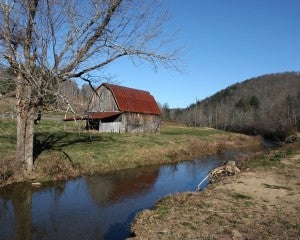 Regulations and lawsuits generate more tension, disagreement, division, and, too often, failure to communicate, than just about anything else in the agricultural world. Regulations are on my mind of late because of several developments:
Regulations and lawsuits generate more tension, disagreement, division, and, too often, failure to communicate, than just about anything else in the agricultural world. Regulations are on my mind of late because of several developments:
- Ohio recently considered legislation to increase regulations on fertilizer applications after a toxic algae bloom last August shut down water supplies to nearly half a million people.
- The Environmental Protection Agency (EPA) is in the final stages of a proposal to resolve ongoing confusion about the extent of federal jurisdiction over isolated wetlands and streams under the Clean Water Act (CWA), clarifying which are protected and which are not, based on science. Sixty percent of our nation’s streams lack clear protection from pollution under the CWA, yet one of every three Americans gets their drinking water from streams that are vulnerable to pollution. Just this week, new Senate Majority Leader Mitch McConnell noted that Congress will address this proposal in the current legislative session.
- EPA is also in the news of late over how it will act to reduce nitrogen and phosphorus pollution in the Mississippi River Basin. Last month, the Fifth Circuit Court heard arguments in a case brought against the EPA for denying a 2008 petition to establish nutrient criteria and limits (total maximum daily load of nutrients) for the Gulf of Mexico. If the court rules in favor of the litigants, EPA will have to develop water quality standards for nitrogen, phosphorus, and other nutrients for states that have not already done so.
- Improved profitability and yields. Efficient fertilizer management and measures to improve soil productivity increase a farmer’s bottom line by ensuring that input costs are returning improved long-term yields.
- Increased confidence. Many sustainability tools are based on improved collection and interpretation of field data. Better information means growers can be more confident in the decisions they make.
- Increased market appeal. Retail and food companies are committing to sustainability goals and making sustainability demands on their suppliers. Embracing sustainable management will position growers at the forefront of this marketplace momentum.
- Improved reputation. Sustainable production offers growers and their advisors a way to document and communicate their effective and responsible management of the land, and their contributions to improved water quality, climate stability, soil conservation, and food security.
- New revenue streams. Sustainable management will create opportunities for farmers to participate in the carbon credit market through California’s cap-and-trade program, which will soon pay farmers in the United States for reducing greenhouse gas emissions.
Water quality crisis
The reality is that we have a water quality crisis on our hands. And despite the significant conservation improvements on the part of farmers, as well as a number of regulatory efforts, agriculture remains the largest contributor to water quality problems in the U.S.
But is further regulating the agricultural industry the only answer to reducing its impact on water quality? Is there a better way, a more viable alternative? If yes, what can compel us to make that alternative happen?
Making the business case for water quality
Instead of battling over regulations or pointing fingers, we at EDF want to focus on finding the ways that work – not just environmentally, but also economically and logistically. We need solutions that deliver benefits for water and climate and also make business sense for farmers and the agricultural sector over all.
That’s why we’re working with companies like Walmart, Smithfield/Murphy Brown, General Mills, and United Suppliers, which are all stepping forward to make fertilizer optimization and soil health in commodity agriculture a part of their business model.
But of course, changes to the supply chain can’t happen without the farmers we all rely on for food every day. We need the agricultural community to be full partners in developing and implementing practical solutions that can head off regulation. During my almost 15 years at EDF, I’ve had countless conversations and interactions with farmers and agricultural leaders, most of whom are fully on board to play this role.
Economic upsides of sustainable farming
We believe there is a solid business case for farmers to embrace sustainable management and to bring about water quality improvements without regulatory controversy. But we need to do a much better job laying out the economic upsides in order to scale up approaches to farm management that not only are sustainable today, but in a future of even greater productivity demands.
Here are some key benefits:
Encouraging innovation
New tools that enable sustainable management enter the market on a regular basis. How can we further support these innovations that advance precision agriculture? And how can we find win-win, pragmatic solutions, instead of waiting until water quality problems are so severe that regulation is the only option? What else can we do to speed the road to scale for agricultural sustainability?
Our ears are open – so please share your ideas and thoughts with us.









